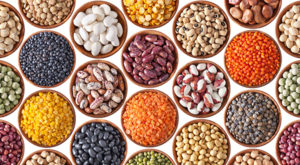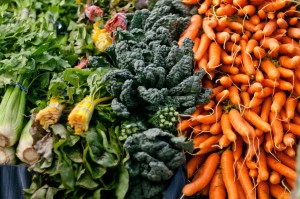
Food Sensitivities? How to Stay Motivated on an Elimination Diet.
Posted September 22, 2017 | Nutrition & Health TipsAn elimination diet can be a challenging endeavor as it entails making dramatic changes in your grocery shopping and cooking habits. It is a two to four-week process, which involves removing foods from your diet that could potentially be detrimental to your gastrointestinal system, weight status, energy level, memory, mood, muscular system, skin, etc
Here are some tips to support you and help you stay motivated through your elimination diet journey:
Maintain a positive attitude.
Keep your sights set on the belief you are taking steps towards healing your body. Try your best to not focus on how restrictive an elimination diet is or what foods you may have to cut out of your diet. Continue to remind yourself the elimination diet is a temporary process that is helping you discover your sensitivity to certain foods.
Make your food journal enjoyable.
Give yourself small rewards as you go through eat week of your elimination diet. Sometimes, it is helpful to view the elimination diet as a personal science experiment to achieve improved health status.
Practice mindful eating.
You may be removing some of your favorite splurges from your diet such as ice cream, coffee, and gluten-containing products. However, incorporating mindfulness during meal time will reduce stress and allow you to experience more satisfaction and awareness of the delicious, whole-foods you are eating. Focus your attention on the delicious fresh fruit and vegetables you are nourishing your body with.
Incorporate a food preparation day.
Life can get pretty busy. Having prepared meals for the week can assist you with sticking to the elimination diet and reduce your cravings. If the proper foods are already prepped for the busy work week, it will be easier to stick to and maintain the elimination diet.
Eating out.
Remember you can still dine out at restaurants, just do your best to plan ahead.Create your own allergy food chart you can provide the restaurant. Also, call the restaurant ahead of time and discuss your dietary restrictions and find menu options that fit your current diet plan.
Support.
Do not be afraid to ask for support from family and friends. This type of diet can be challenging and it is helpful to have family and friends involved in the process.
By: Hayley Cornell

What are Essential Amino Acids?
Posted August 21, 2017 | Nutrition & Health TipsDid you know that our body utilizes twenty different amino acids to make its proteins? Proteins are vital for our cells, tissues, hormones, and muscles. Proteins also affect neurotransmitter function which involves regulating several systems in the body. Neurotransmitters affect energy, mood, sleep, emotions, memory, and appetite.
The body has the ability to produce some amino acids but not all of them. Essential amino acids are supplied to the body through dietary intake. The essential amino acids our bodies need and cannot produce themselves are arginine, histidine, isoleucine, leucine, lysine, methionine, phenylalanine, threonine, tryptophan, and valine. These essential amino acids must be in our food and/or daily supplements.
Protein from animal sources typically includes all the essential amino acids. Foods that contain all the amino acids are known as a complete protein source. However, protein from plant sources such as grains, vegetables, legumes, fruits, nuts, and seeds lack high amounts of some of the essential amino acids. Fortunately, pairing up certain foods can create a complete protein, thereby ensuring sufficient quantities of all the essential amino acids. Foods that work together to create a complete protein are known as complementary proteins.
Here are some examples of complementary proteins that work together to make a complete protein:
1) Legumes with grains, seeds, or nuts
-Beans with brown rice (or other grain)
-Beans with whole-grain tortillas (or other tortillas)
-Quinoa and lentils
-Hummus with pita breads or crackers
-Tofu with brown rice (or other grains)
-Peanut butter with toast
-Peanut butter with oatmeal
-Noodle stir-fry with a peanut or cashew sauce

2) Dairy with nuts, legumes, or grains
-Yogurt with nuts
-Whole grain cereal/granola with milk or yogurt
-Smoothie with nuts and milk
-Soups with beans and/or grains (dairy-base)
-Pizza
It is important to emphasize variety when selecting protein sources. Try to incorporate various animal proteins as well as plant proteins into your daily diet. Pairing your plant protein with a complementary food will ensure your body is receiving all the amino acids it needs. Fortunately, individuals who cannot tolerate dairy and those who avoid animal products all together have some options for protein sources that contain all the amino acids. These alternative options contain all the amino acids but be aware the amounts may be significantly less than what animal products contain.
3) Alternative products which contain all the essential amino acids
-Spirulina (pill or powder)
-Soy products
-Hemp products
-Seaweed products
References:
https://www.hsph.harvard.edu/nutritionsource/what-should-you-eat/protein/
https://www.ncbi.nlm.nih.gov/pmc/articles/PMC3905294/
By: Hayley Cornell











